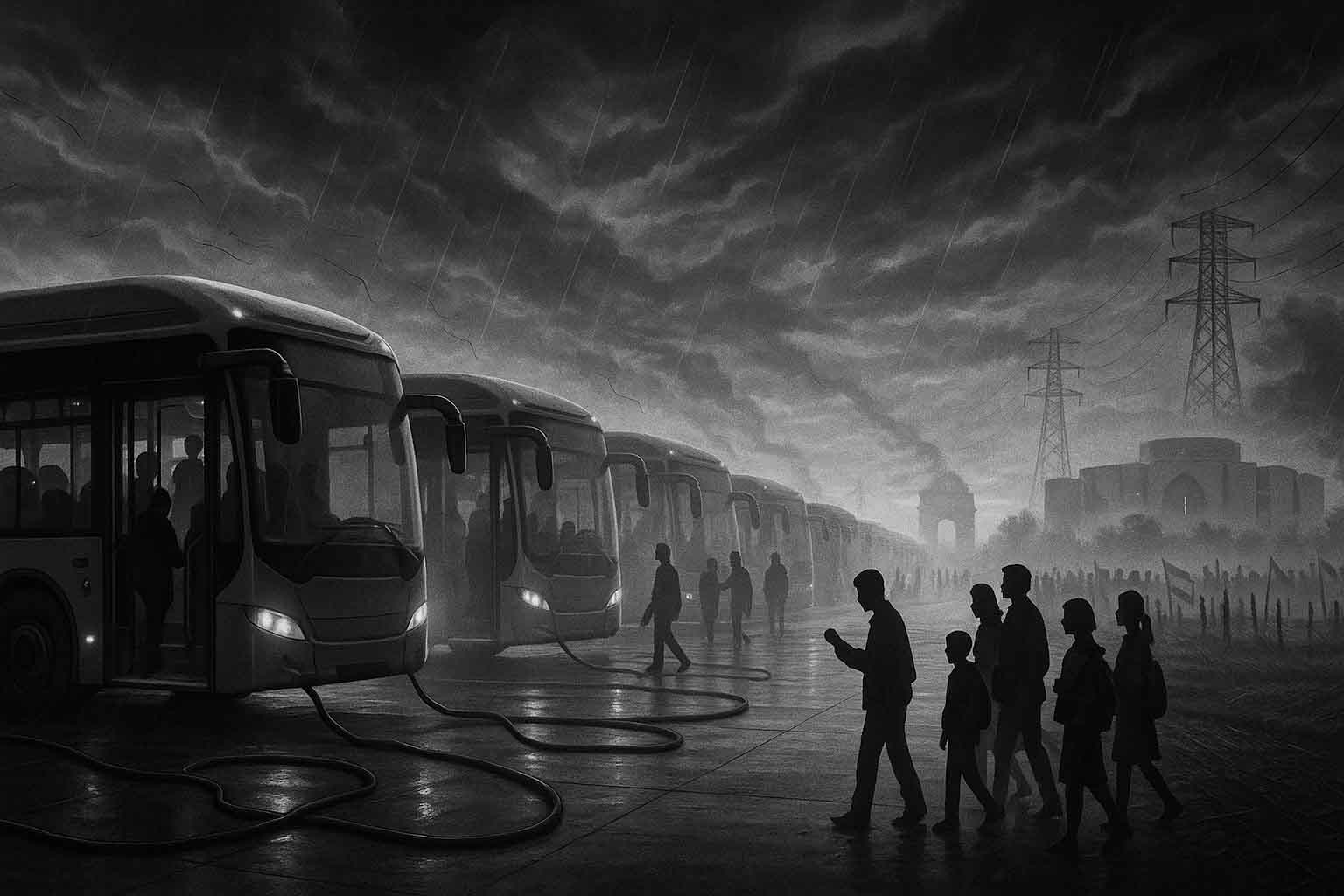New Delhi, October 4:
India’s electric bus (e-bus) market is on the move again. After a lull in FY25, registrations surged 37% in the first half of FY26, according to Vahan portal data, with Delhi leading the charge at 938 units—a 69% rise year-on-year. Odisha followed with a four-fold increase, signaling momentum not just in metros but also in emerging states.
This rebound is backed by strong government incentives under the PM E-Drive scheme, renewed state transport tenders, and growing recognition of electric buses as cost-efficient, climate-friendly alternatives.
Delhi in the Fast Lane
Delhi, often criticized for its pollution levels, has turned the tide in public transport adoption:
- 69% growth in e-bus registrations.
- Over 938 units deployed in just six months.
- Emphasis on AC, low-floor models for high-volume urban corridors.
The push aligns with Delhi’s goal of achieving 80% electrification of public transport by 2030.
The PM E-Drive Advantage
At the heart of the surge lies the PM E-Drive subsidy framework:
- ₹25–35 lakh subsidy per bus, depending on localization norms.
- Incentives linked to domestic manufacturing, spurring Make in India.
- Support for charging infrastructure and depot electrification in parallel.
Without this support, the average cost of an e-bus (~₹1 crore) would remain prohibitive for state transport undertakings (STUs).
Rising Adoption Beyond Metros
While Delhi leads in volume, smaller states like Odisha, Kerala, and Himachal Pradesh are rapidly adding e-buses:
- Odisha: Quadrupled sales off a small base.
- Kerala: Piloting electric intercity buses.
- Himachal Pradesh: Deploying e-buses on hilly terrain routes, testing battery resilience.
This shows India’s e-bus market is no longer limited to big metros but is diversifying geographically.
Why E-Buses Make Economic Sense
- Lower Operating Costs: Electricity is cheaper than diesel.
- Maintenance Advantage: Fewer moving parts compared to IC engine buses.
- Lifecycle Value: Cost parity achieved within 5–7 years of operation.
- Green Branding: States can project climate action with visible results.
Analysts argue that lifecycle math strongly favors e-buses where routes are predictable and charging downtime can be managed.
Challenges Ahead
Despite strong sales, challenges remain:
- Charging Infrastructure: Depots need large-scale electrification.
- Range Anxiety: Operators worry about downtime on intercity routes.
- Upfront Costs: Even with subsidies, financing remains a hurdle.
- Technology Upgrades: Battery efficiency, recycling, and grid integration are critical.
“We cannot just buy buses; we must invest equally in charging, scheduling software, and driver training,” said an official from Delhi Transport Corporation (DTC).
Passenger Perspective
Passengers riding e-buses report quieter journeys, less vibration, and smoother rides. For many in Delhi, it is also about breathing easier.
“Knowing that this bus is not polluting makes me feel like I am part of the solution,” said Anjali Mehta, a daily commuter in South Delhi.
Global Context
India’s e-bus shift is part of a global wave:
- China: Operates over 500,000 e-buses, the world’s largest fleet.
- Europe: Targets 100% zero-emission buses by 2035.
- India: Aims for 50,000+ e-buses on roads by 2030.
With domestic production ramping up, India hopes to become not only a large consumer but also a global exporter of electric mobility solutions.
Policy & Political Angle
The Modi government is keen to showcase green mobility as part of its climate commitments under COP27. Opposition parties have, however, demanded clearer roadmaps on battery recycling and subsidy disbursement delays.
Meanwhile, urban voters—choking under NCR’s pollution—are likely to welcome every e-bus as a visible step toward clean air.
The Road to 2026
- Procurement Pipelines: Multiple STUs have tenders in progress for late FY26.
- Tourism Pilots: States like Rajasthan are testing e-buses on heritage tourism routes.
- Private Participation: Ride-hailing and bus aggregator firms may soon deploy private e-bus fleets.
Analysts expect momentum to continue into 2026, with e-bus deployment becoming mainstream in India’s transport policy.
Conclusion
The resurgence of e-bus sales signals more than just a market rebound—it is a step toward India’s energy transition and public health goals. With Delhi at the forefront and smaller states catching up, the e-bus journey reflects both opportunity and responsibility.
If challenges in charging infrastructure and financing are addressed, India could soon leapfrog into the ranks of global leaders in green urban transport.
#EV #PublicTransport #EBus #Delhi #CleanAir #PMEDrive #EnergyTransition #GreenMobility
























+ There are no comments
Add yours